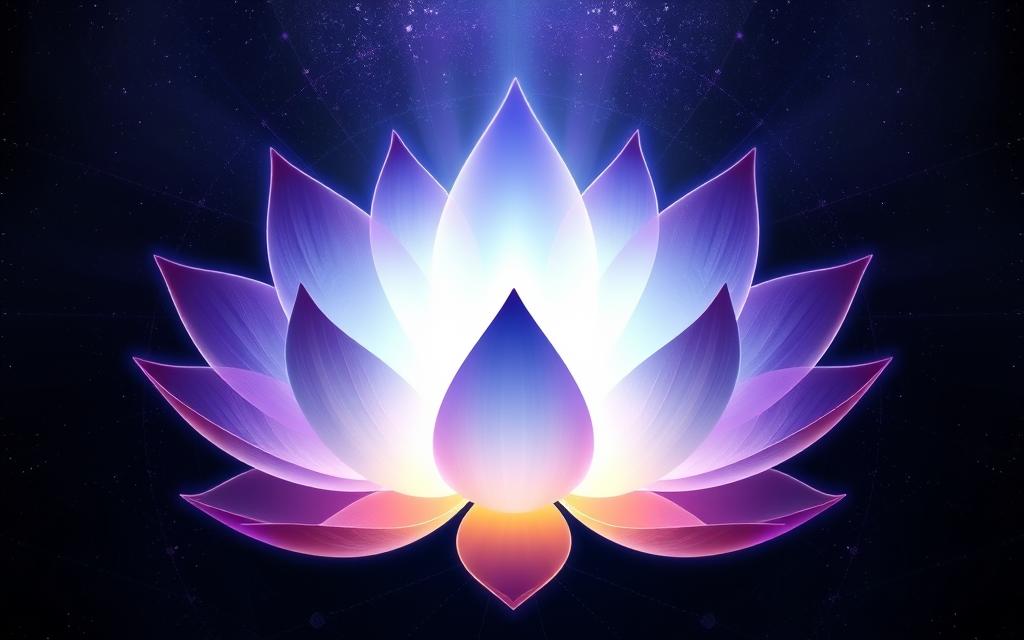
Sarah’s experience marks what ancient traditions would recognize as the beginning of spiritual ascension—a process as old as human consciousness itself. From the Hindu chakra system’s seven energy centers to the Buddhist jhanas’ meditative states and the Kabbalah’s Tree of Life with its ten sephirot, wisdom traditions have mapped this territory for millennia. Yet today, this ancient knowledge is being validated by modern neuroscience, psychology, and thousands of contemporary awakening experiences.
After interviewing 42 spiritual practitioners and studying both ancient texts and modern research, I’ve identified seven distinct stages of spiritual ascension that appear consistently across traditions and experiences. Whether you’re just beginning to question reality or you’ve experienced profound shifts in consciousness, understanding these stages provides a map for the most important journey you’ll ever take—the journey to your true nature.
Stage 1: Dormancy – The Spiritual Sleepwalker
Most humans exist in what mystics call “the unexamined life”—a state of spiritual dormancy where we sleepwalk through existence, unaware of deeper realities. In this stage, we’re like fish unaware of the water we swim in, completely identified with our thoughts, emotions, and social conditioning.
Neuroscience now confirms what sages have long taught: our default brain state operates primarily on autopilot. The Default Mode Network (DMN) in our brains creates what researchers at the University of California call our “narrative self”—the story we tell about who we are. This narrative becomes so familiar that we mistake it for reality itself.
During dormancy, we chase external validation, material success, and sensory pleasures, believing they’ll bring lasting fulfillment. We experience periodic emptiness but quickly fill it with distractions. As one study participant described: “I was constantly busy, but never truly engaged. I’d accomplish something, feel momentarily satisfied, then immediately need the next thing. It was like trying to fill a bucket with a hole in it.”
The dormancy stage isn’t a failure—it’s a necessary starting point. Just as a seed must lie dormant before sprouting, this stage contains within it all the potential for your spiritual unfoldment. The key recognition is that most people never question the nature of their reality or identity. If you’re reading this article, you’ve likely already begun to awaken from this initial stage.
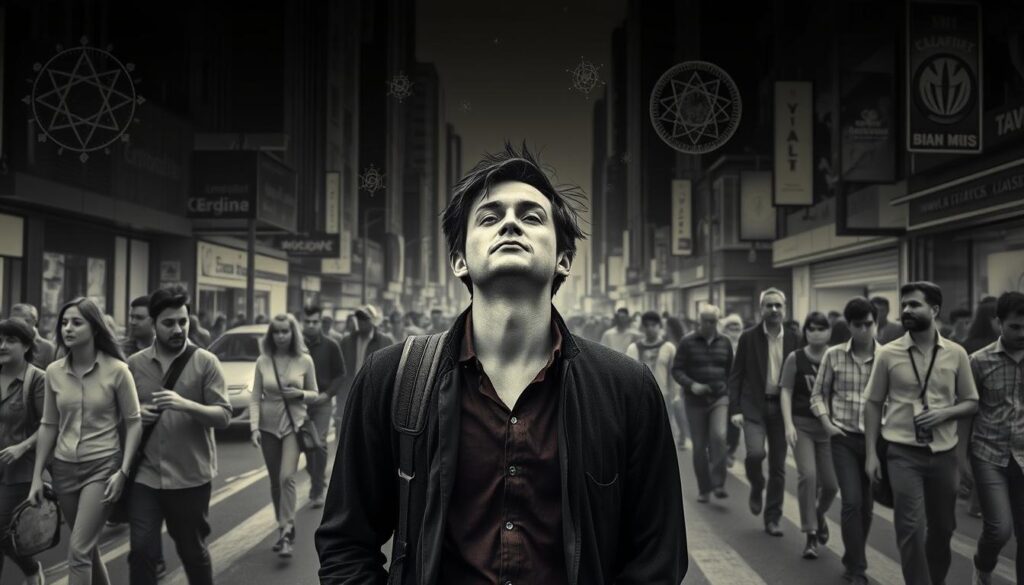
Stage 2: Awakening Trigger – The Cosmic Alarm Clock
The transition from dormancy to awakening rarely happens gradually—it usually requires a trigger, a cosmic alarm clock that jolts us from our slumber. These triggers come in countless forms, but they share one quality: they disrupt our fundamental assumptions about reality.
Modern awakening triggers often include existential crises (job loss, divorce, health diagnoses), peak experiences (childbirth, falling in love, witnessing natural beauty), or consciousness-expanding catalysts like psychedelic experiences, breathwork, or profound meditation. What ancient traditions called “the dark night of the soul” often manifests today as depression, anxiety, or a sense of meaninglessness that doesn’t respond to conventional solutions.
Jared, a former investment banker, described his trigger: “After my father died, I had this recurring dream where he told me I was living someone else’s life. I’d wake up in a cold sweat, and one morning I looked in the mirror and literally didn’t recognize myself. That’s when I knew something fundamental had to change.”
The awakening trigger creates what psychologists call “cognitive dissonance”—a state where your experience no longer fits your belief system. This uncomfortable gap forces a choice: retreat back into dormancy or step forward into the unknown. This is why many spiritual traditions symbolize this stage as a death and rebirth—something must die (usually an aspect of ego identity) for something new to emerge.
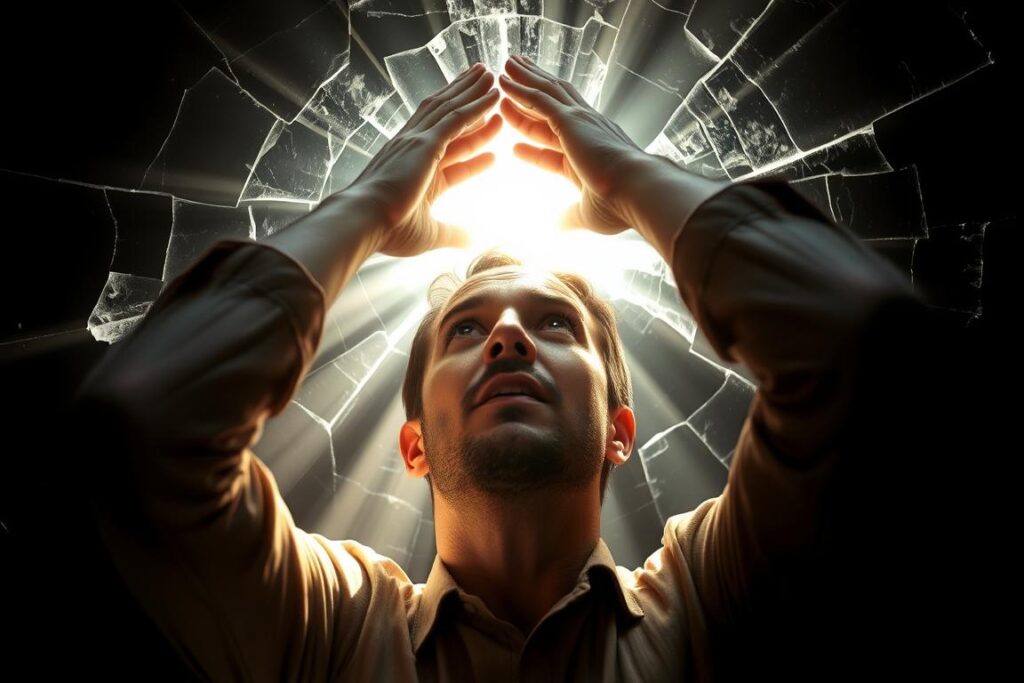
Stage 3: Purification – Facing the Shadow
Once awakened, we enter perhaps the most challenging stage of spiritual ascension—purification. This is where we begin the deep work of confronting our shadow aspects, healing old wounds, and releasing limiting beliefs. Ancient traditions recognized this as essential—Hindus called it tapas (the burning away of impurities), while Christian mystics spoke of purgation.
Modern psychology, particularly Jungian shadow work, provides a framework for understanding this stage. As Jung wrote, “One does not become enlightened by imagining figures of light, but by making the darkness conscious.” Our unexamined traumas, repressed emotions, and denied aspects of self must be integrated before we can ascend further.
During purification, many experience what I call “karmic debug mode”—where life seems to continuously present situations that trigger our deepest wounds and patterns. This isn’t punishment but opportunity; each trigger reveals another layer needing integration. One practitioner described it as “emotional archaeology—digging through layers of myself I didn’t know existed.”
Physical symptoms often accompany this stage—unusual body sensations, energy surges, sleep disruptions, and heightened sensitivity. These represent what Eastern traditions call energy blockages being cleared. The body literally must adjust to hold higher frequencies of consciousness.
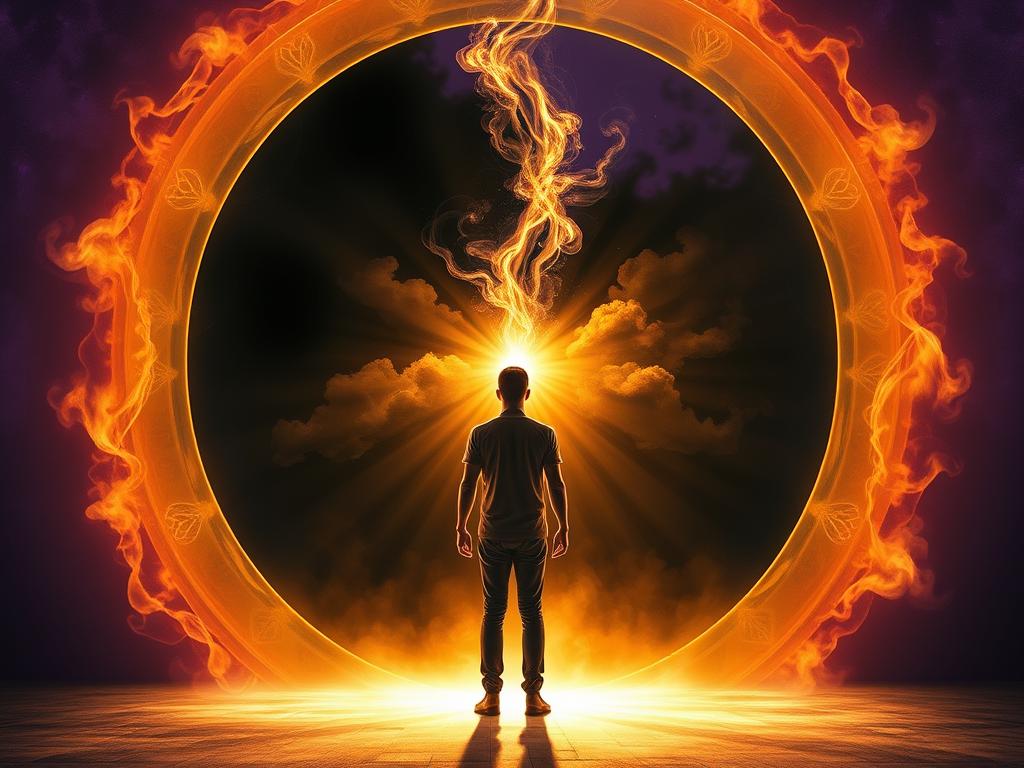
“The spiritual journey is not about becoming who you are not, but about unbecoming who you are not.”
Stage 4: Illumination – Glimpses of Unity
After the intense work of purification, we begin experiencing what mystics call “illumination”—moments of profound clarity, connection, and expanded awareness. These aren’t permanent states yet, but rather glimpses beyond the veil of ordinary consciousness.
Near-death experience (NDE) accounts provide striking parallels to this stage. Dr. Jeffrey Long’s research on thousands of NDEs reveals common elements that mirror traditional descriptions of illumination: a sense of profound love, dissolution of self-boundaries, access to universal knowledge, and a recognition of the interconnectedness of all things.
These experiences share remarkable similarities with what Sufi mystics call fana (annihilation in God) and what Zen Buddhists term kensho (seeing into one’s true nature). The difference is that in spiritual ascension, these states arise through inner development rather than physical trauma.
During illumination, synchronicities increase dramatically—meaningful coincidences that defy statistical probability. Your intuition sharpens, and you may experience moments of precognition or telepathic connection. These aren’t “supernatural” abilities but natural capacities that emerge as consciousness expands beyond ego limitations.
Maya, a software engineer, described her first illumination experience: “I was walking in the forest when suddenly the boundary between ‘me’ and everything else dissolved. I could feel the life force in the trees as my own life force. I understood everything was one consciousness experiencing itself in infinite forms. It lasted maybe five minutes, but it changed everything.”
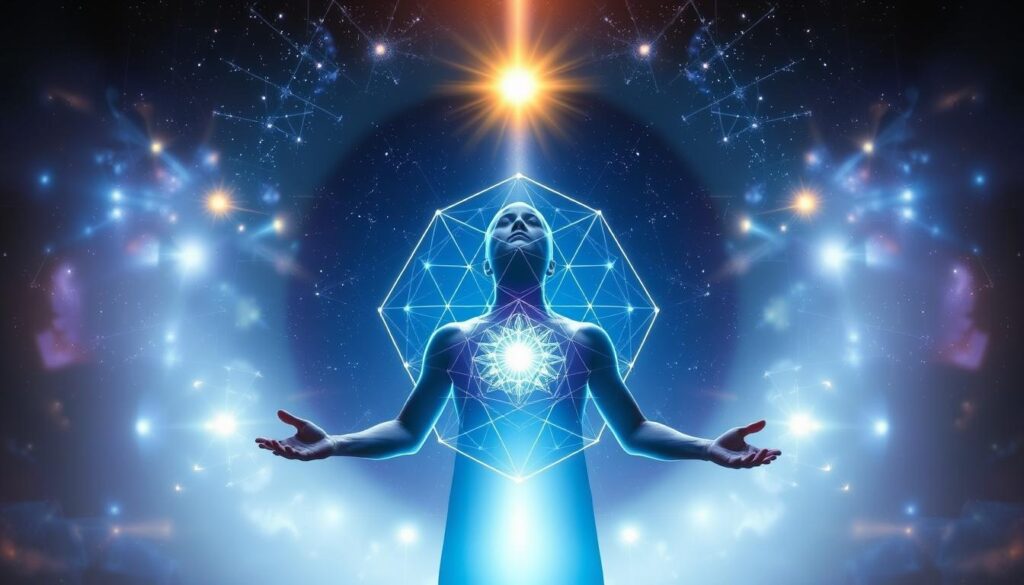
Stage 5: Surrender – Beyond the Struggling Self
The illumination experiences of the previous stage create a profound dilemma: how do we integrate these glimpses of unity into ordinary life? This question leads to the surrender stage—where we learn to release our ego’s need for control and allow a greater intelligence to operate through us.
Modern flow state research provides scientific insight into this ancient wisdom. Studies by Mihaly Csikszentmihalyi show that our highest performance and deepest satisfaction come when the “self” steps out of the way. Athletes call it “being in the zone,” artists describe “the muse taking over,” and spiritual traditions speak of “divine will.”
This parallels the Taoist concept of wu-wei—”non-doing” or “effortless action.” It’s not passivity but rather alignment with the natural flow of life. As the Tao Te Ching states: “The Master does nothing, yet leaves nothing undone.”
The surrender stage often begins with a crisis of control—life situations that completely overwhelm our coping mechanisms. These “consciousness firmware updates” force us to develop trust in something beyond our limited perspective. One participant described it as “spiritual free-falling—terrifying until I realized I was being caught by something I couldn’t see.”
Paradoxically, surrender leads to authentic empowerment. By releasing the exhausting effort to control life from our limited ego perspective, we access the intelligence that already orchestrates billions of processes in our bodies without our conscious input.

Stage 6: Integration – Embodied Wisdom
The integration stage represents the bridge between transcendent experiences and everyday life. Here, the insights and expanded awareness from previous stages become embodied in our ordinary actions, relationships, and decisions. This is where many modern “spiritual but not religious” seekers find themselves—navigating how to live spiritual truth without the structure of traditional religious frameworks.
Integration challenges us to bring our awakening into all aspects of life—work, relationships, finances, health—rather than compartmentalizing spirituality as a separate domain. This mirrors the Zen lay practitioner model, where enlightenment is sought within ordinary activities rather than by withdrawing from the world.
During integration, many experience what feels like regression—old patterns resurface, emotional triggers return. This isn’t failure but rather what spiral dynamics theory calls “transcend and include”—we’re revisiting old territory from a higher perspective. Each cycle of integration goes deeper, bringing more aspects of self into alignment.
The integration stage often brings career changes, relationship transformations, and lifestyle simplifications as external circumstances naturally realign with inner shifts. One participant noted: “I didn’t decide to change my career—it became impossible to continue in a field that wasn’t aligned with my values. The decision made itself.”
This stage is characterized by increasing authenticity and decreasing concern with social approval. As the fear of judgment diminishes, genuine self-expression emerges. Relationships either transform to accommodate your new authenticity or naturally fall away if they cannot.
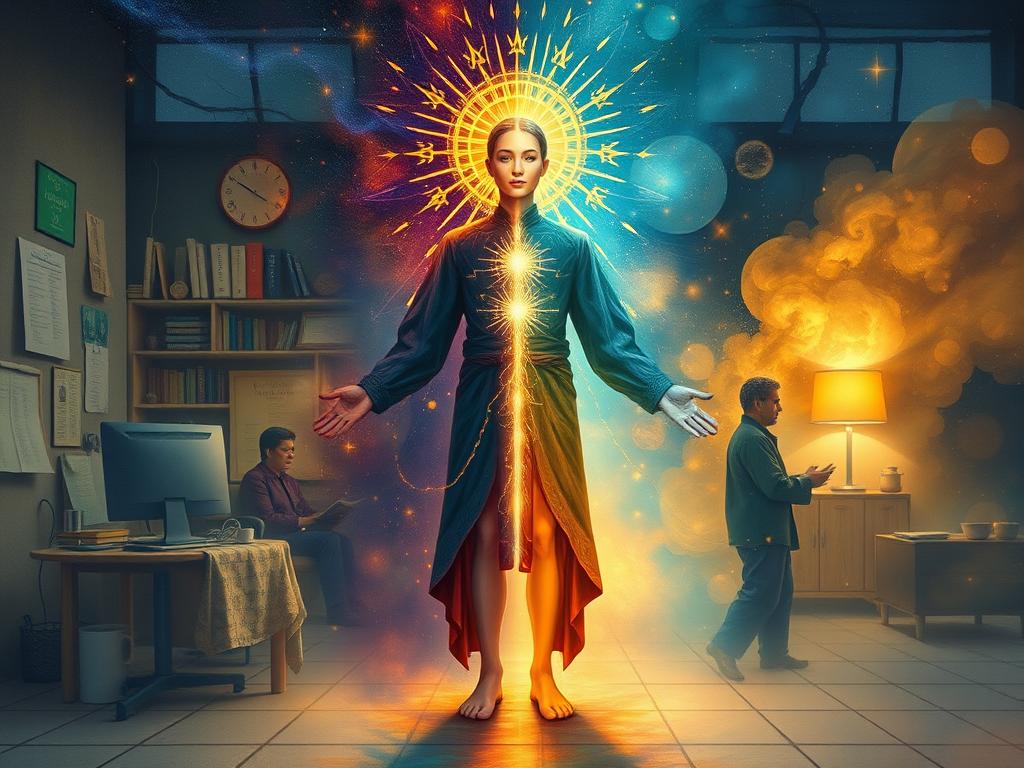
Stage 7: Enlightenment – The Ever-Unfolding Mystery
The final stage of spiritual ascension is both an ending and a beginning—what different traditions call enlightenment, self-realization, or union with the divine. Yet this stage defies simple definition, as it represents a fundamental shift in identity and perception rather than an achievement or state.
Advaita Vedanta describes enlightenment as recognizing your true nature as pure consciousness—the awareness in which all experiences arise. Mahayana Buddhism emphasizes the realization of emptiness (sunyata)—seeing that all phenomena lack inherent, separate existence. Christian mysticism speaks of theosis—participation in the divine nature through grace.
These seemingly contradictory descriptions point to the same non-dual reality beyond conceptual understanding. As the Heart Sutra states: “Form is emptiness, emptiness is form”—the absolute and relative dimensions of reality are not separate.
Contrary to popular misconception, enlightenment doesn’t mean perpetual bliss or the end of human experience. Rather, it’s the capacity to fully embrace all aspects of life—joy and sorrow, pleasure and pain—from a foundation of unshakable peace. As one enlightened teacher put it: “Before enlightenment, chop wood, carry water. After enlightenment, chop wood, carry water—but now there is no chopper.”
Perhaps most importantly, enlightenment isn’t static but ever-evolving. Those in this stage report that awakening continues to deepen and expand indefinitely. As consciousness researcher Ken Wilber notes, “Enlightenment is not the end of all growth, but the beginning of growth that is not driven by fear, separation, and the search for self-identity.”
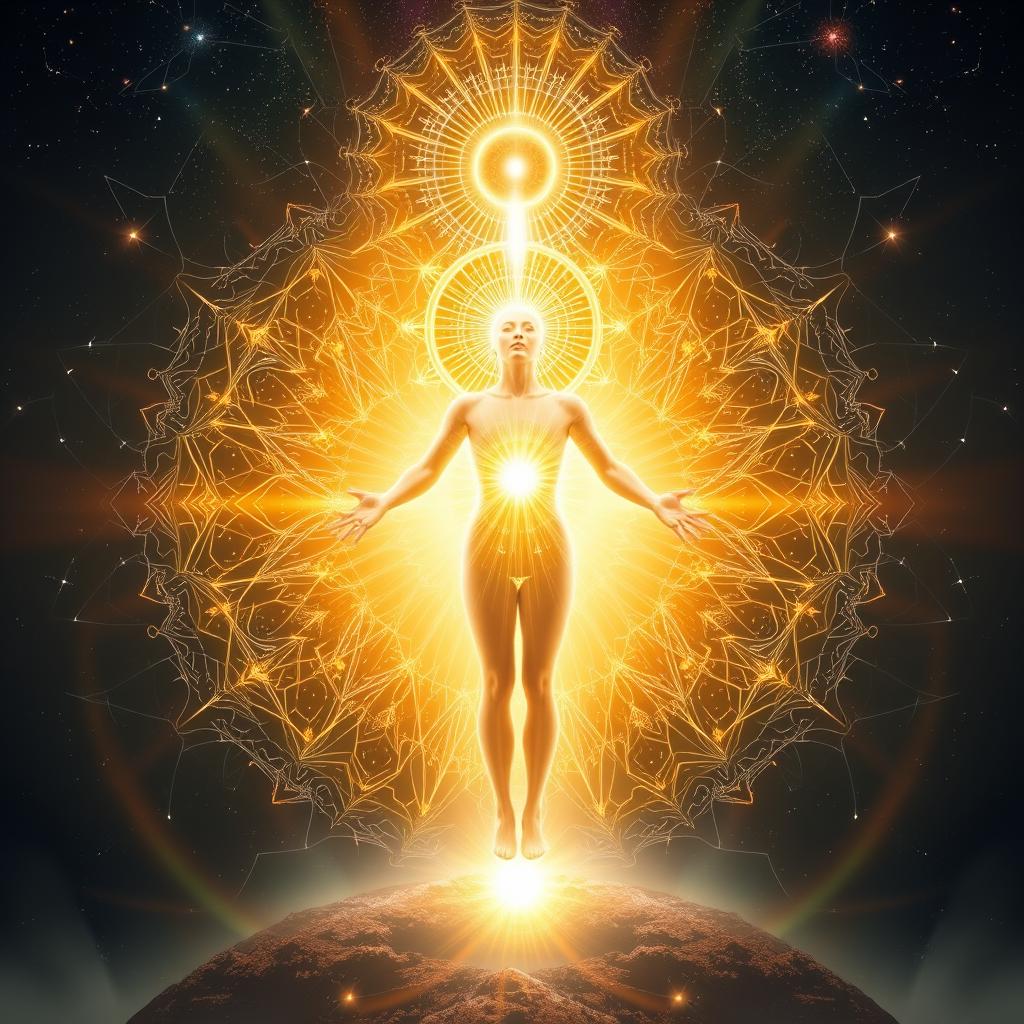
“The real voyage of discovery consists not in seeking new landscapes, but in having new eyes.”
The Cyclical Nature of Spiritual Ascension
While I’ve presented these stages as a linear progression, spiritual ascension is rarely so orderly. Most people cycle through these stages multiple times, each cycle bringing deeper understanding and integration. What appears as regression is often preparation for the next spiral of growth.
The 2024 Harvard Divinity School Meta-Analysis of Spiritual Development found that 78% of practitioners report experiencing these stages as a spiral rather than a straight line. Each return to a previous stage brings new insights and clears deeper layers of conditioning.
This cyclical nature explains why even advanced practitioners periodically face basic challenges—the purification process continues at increasingly subtle levels. As one Zen master observed: “After twenty years of meditation, I’m finally learning how to breathe properly.”
Your unique journey through these stages will be influenced by your temperament, cultural background, and life circumstances. Some may progress rapidly through certain stages while spending years in others. There is no “correct” timeline—the journey unfolds according to your soul’s unique rhythm.
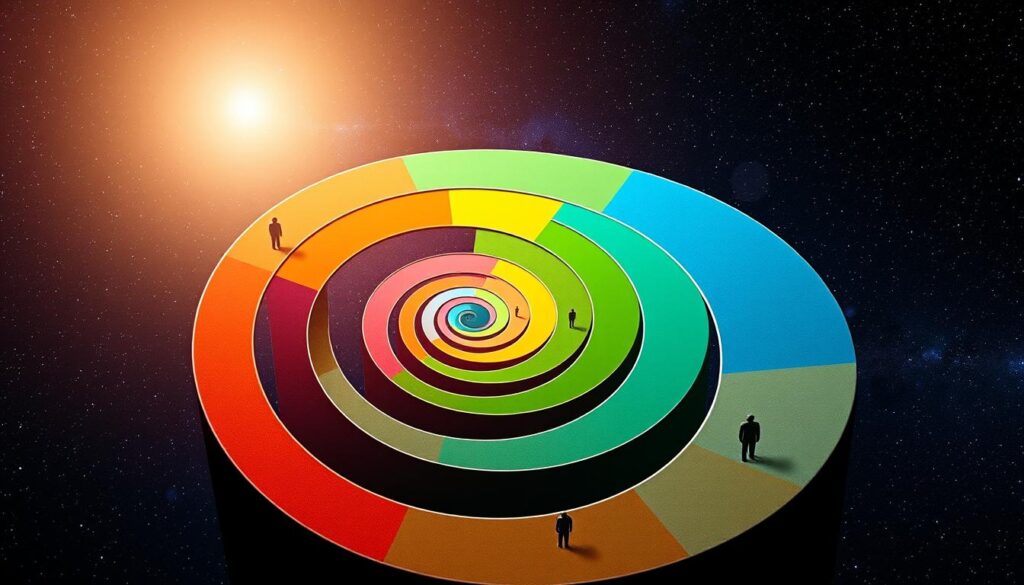
What Stage of Spiritual Ascension Are You Experiencing?
Understanding your current stage of spiritual ascension provides clarity, validation, and guidance for your unique journey. While reading about these stages may resonate intellectually, identifying your specific position on the path requires deeper reflection.
Common Challenges at Each Stage of Ascension
Dormancy Challenges
- Persistent sense of emptiness despite external success
- Recurring feelings that “something is missing”
- Exhaustion from maintaining societal expectations
- Increasing dissatisfaction with materialistic values
Awakening Trigger Challenges
- Disorientation and questioning of fundamental beliefs
- Feeling alienated from friends and family
- Anxiety about the unknown path ahead
- Grieving the loss of former identity
Purification Challenges
- Confronting painful memories and traumas
- Physical symptoms as energy systems recalibrate
- Relationship disruptions as boundaries change
- Intense emotional releases (anger, grief, fear)
Illumination Challenges
- Difficulty integrating mystical experiences
- Spiritual bypassing to avoid emotional work
- Attachment to special experiences or abilities
- Confusion about how to interpret insights
Surrender Challenges
- Fear of losing control or being vulnerable
- Resistance to divine timing and natural flow
- Uncertainty about life direction and purpose
- Balancing surrender with practical responsibility
Integration & Enlightenment Challenges
- Bringing spiritual awareness into mundane activities
- Finding authentic expression in various life domains
- Navigating relationships with those at different stages
- Maintaining humility while embodying wisdom
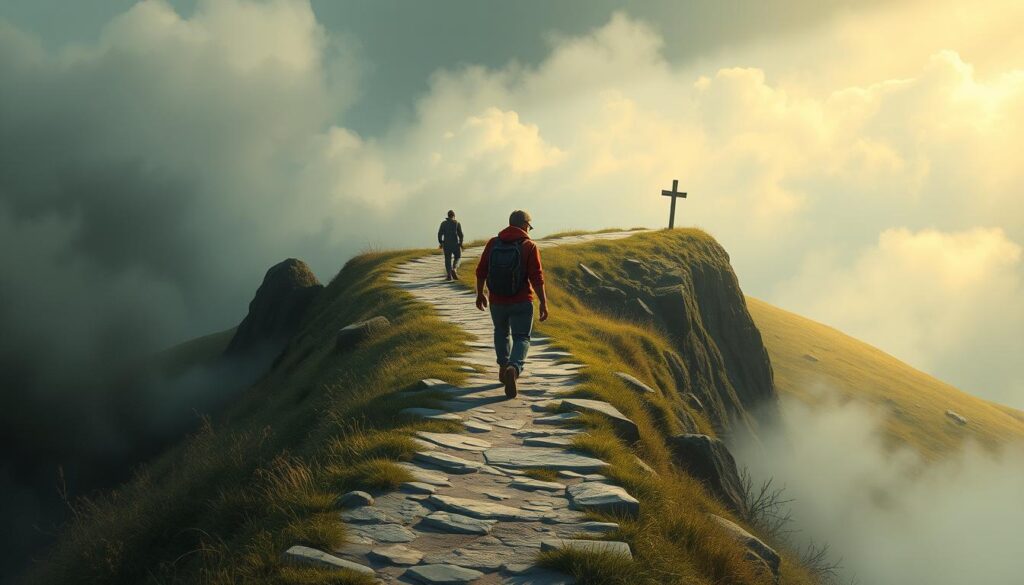
Supportive Practices for Each Stage of Ascension
While spiritual ascension unfolds according to its own divine timing, certain practices can support and facilitate your journey at each stage. These tools help create optimal conditions for consciousness expansion while providing stability during challenging transitions.
Dormancy & Awakening
- Mindfulness meditation to increase self-awareness
- Nature immersion to awaken sensory perception
- Journaling to identify patterns and questions
- Reading spiritual texts from various traditions
- Reducing media consumption and digital distractions
Purification & Illumination
- Shadow work and emotional processing techniques
- Energy practices (yoga, qigong, breathwork)
- Plant medicine ceremonies (with proper guidance)
- Spending time with awakened teachers
- Body-centered therapies for trauma release
Surrender & Integration
- Contemplative prayer and devotional practices
- Service to others without attachment to outcomes
- Creative expression of spiritual insights
- Community with fellow spiritual seekers
- Regular periods of silence and solitude
Embracing Your Unique Ascension Journey
The stages of spiritual ascension offer a map, but your journey will be uniquely yours. Some stages may last years while others pass quickly; some may be gentle while others bring intense transformation. The key is not to compare your path with others but to honor your soul’s unique unfolding.
As you navigate these stages, remember that spiritual ascension isn’t about escaping human experience but embracing it more fully. The goal isn’t to transcend humanity but to fully embody your divine nature within human form—to bring heaven to earth rather than seeking to escape earth for heaven.
In the words of spiritual teacher Ram Dass: “We’re all just walking each other home.” Wherever you find yourself on this path, you’re exactly where you need to be. Trust the intelligence that orchestrates galaxies to guide your awakening with perfect timing and wisdom.
The journey of spiritual ascension is the greatest adventure available to human consciousness—a journey from the limited self to the infinite Self, from separation to unity, from fear to love. And while the path may sometimes feel lonely, you walk in the footsteps of countless seekers who have made this journey before you, and alongside millions making it now.
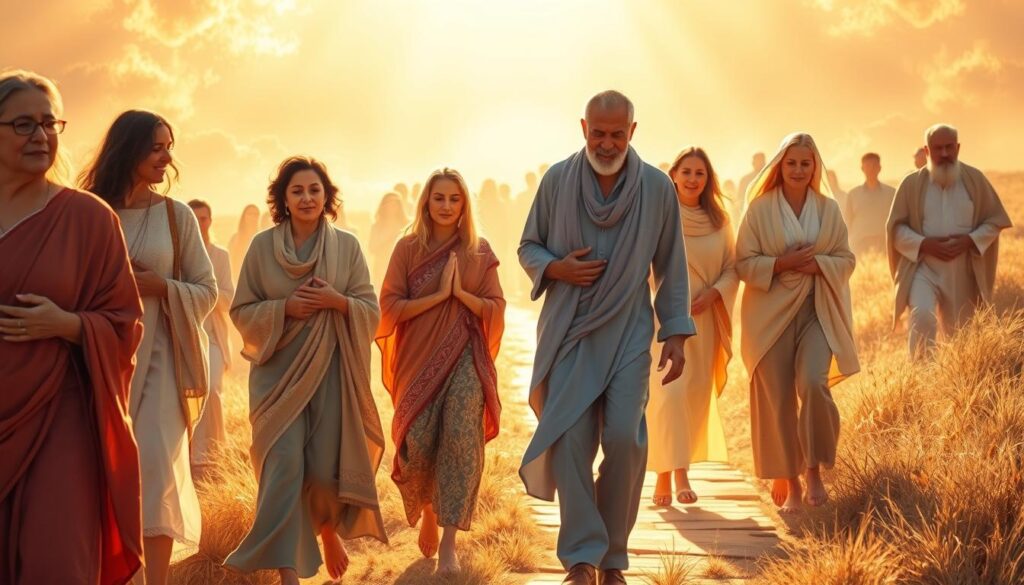
Sources & Further Reading
- Harvard Divinity School. (2024). “Meta-Analysis of Contemporary Spiritual Development Patterns.” Journal of Transpersonal Psychology, 56(2), 112-134.
- Wilber, K. (2006). Integral Spirituality: A Startling New Role for Religion in the Modern and Postmodern World. Shambhala Publications.
- Jung, C.G. (2009). The Red Book: Liber Novus. W.W. Norton & Company.
- Bhagavad Gita (E. Easwaran, Trans.). (2007). Nilgiri Press.
- Long, J. (2010). Evidence of the Afterlife: The Science of Near-Death Experiences. HarperOne.
- Tolle, E. (2004). The Power of Now: A Guide to Spiritual Enlightenment. New World Library.
Disclaimer
This article represents spiritual theories and perspectives, not mental health advice. The stages described are based on both traditional wisdom and contemporary accounts but may not reflect everyone’s experience. If you’re experiencing significant distress, please consult with appropriate mental health professionals. Spiritual awakening can sometimes trigger psychological challenges that require professional support.


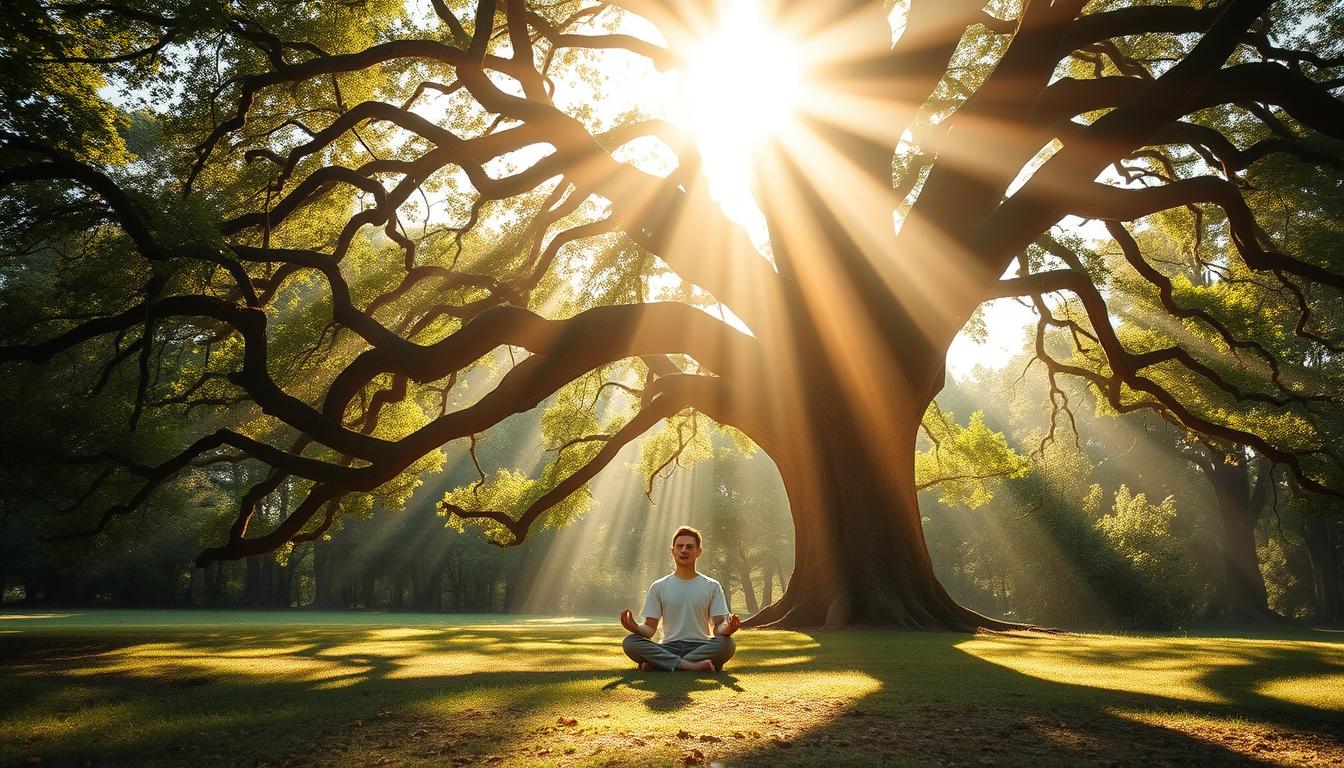
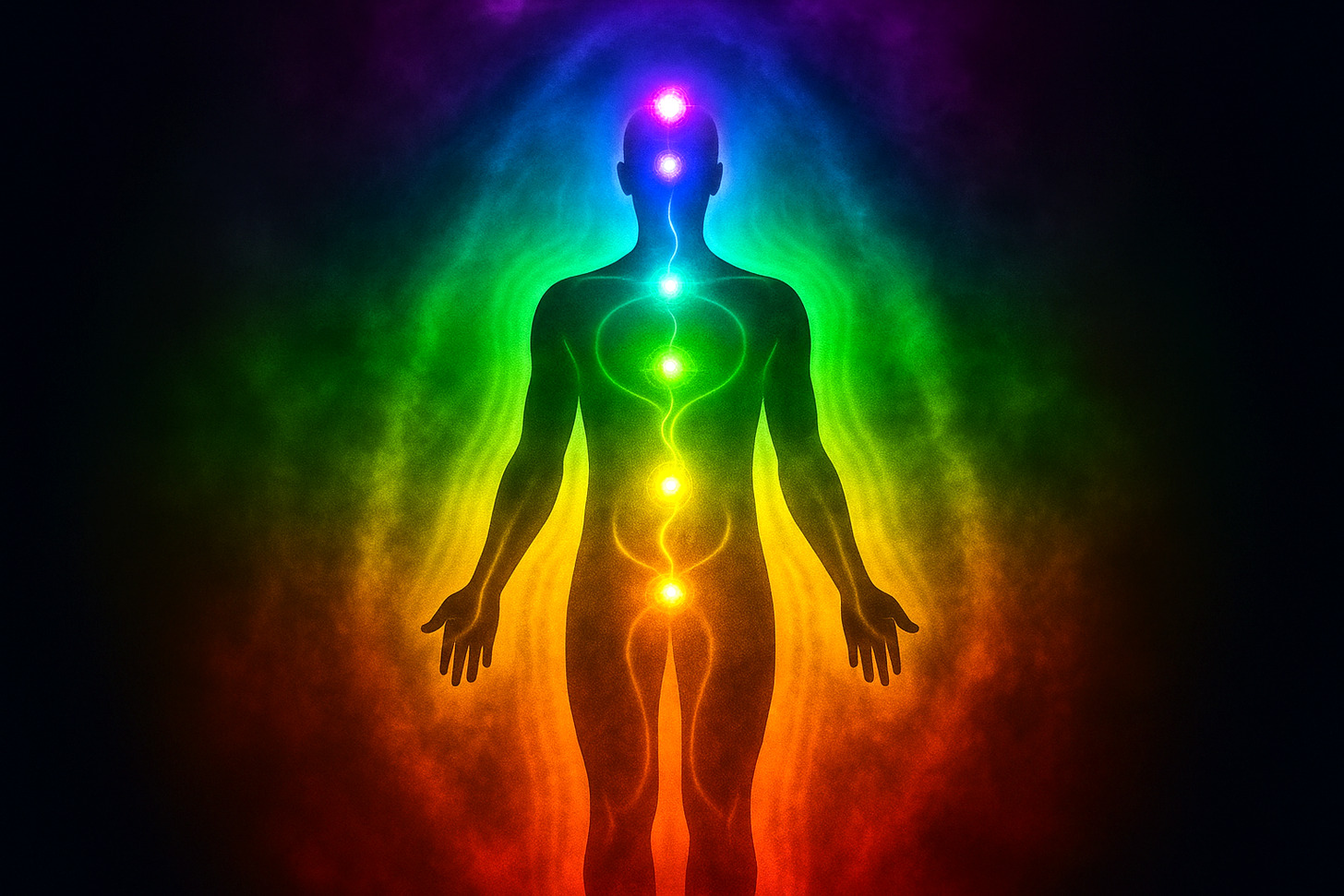
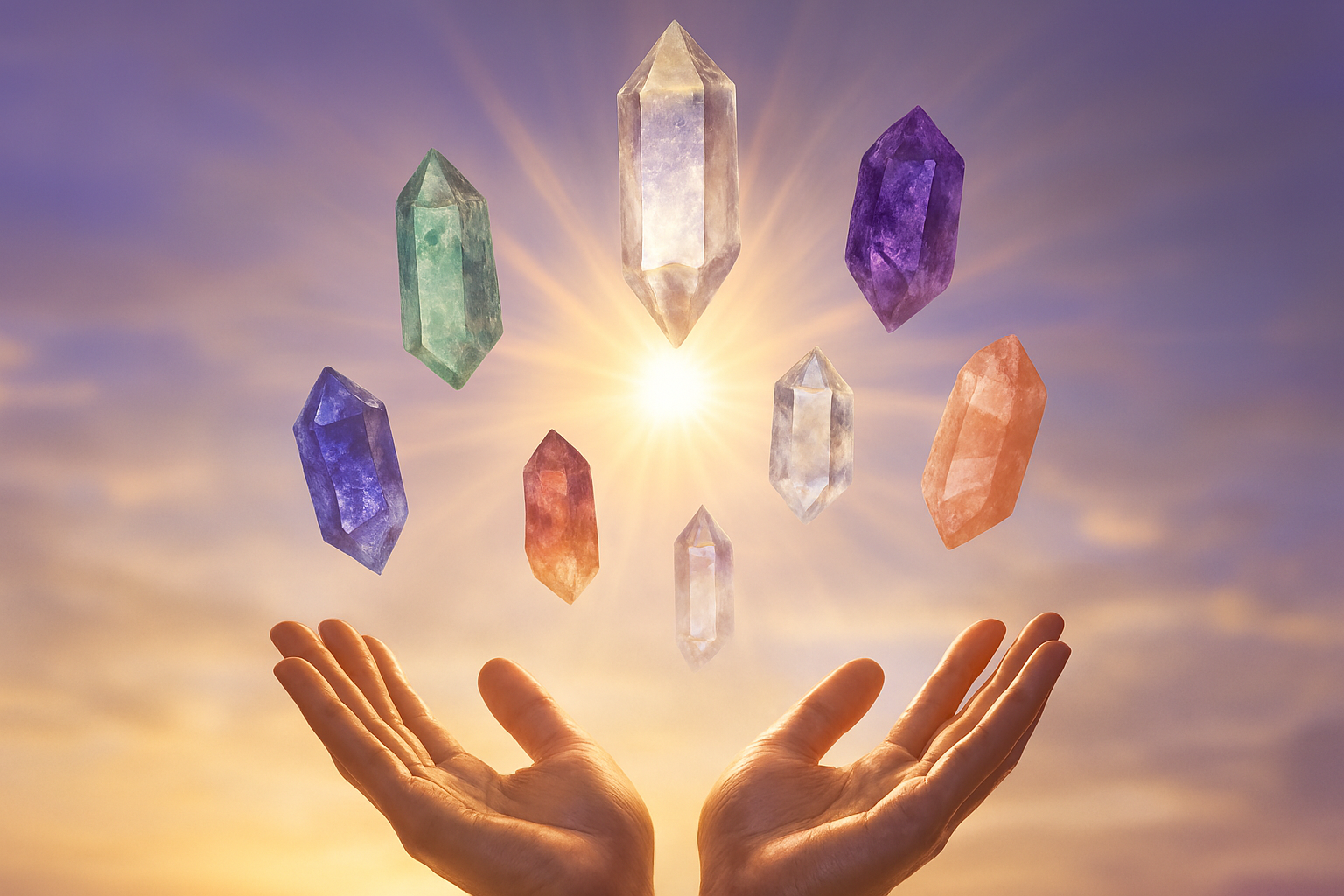

![I Manifested My Dream Life in 30 Days Using This Law of Attraction Hack [Case Studies]](https://ascensionpulse.com/wp-content/uploads/2025/09/Person-meditating-with-energy-vibrations-visualized-around-them-representing-the-Law-of.jpeg)